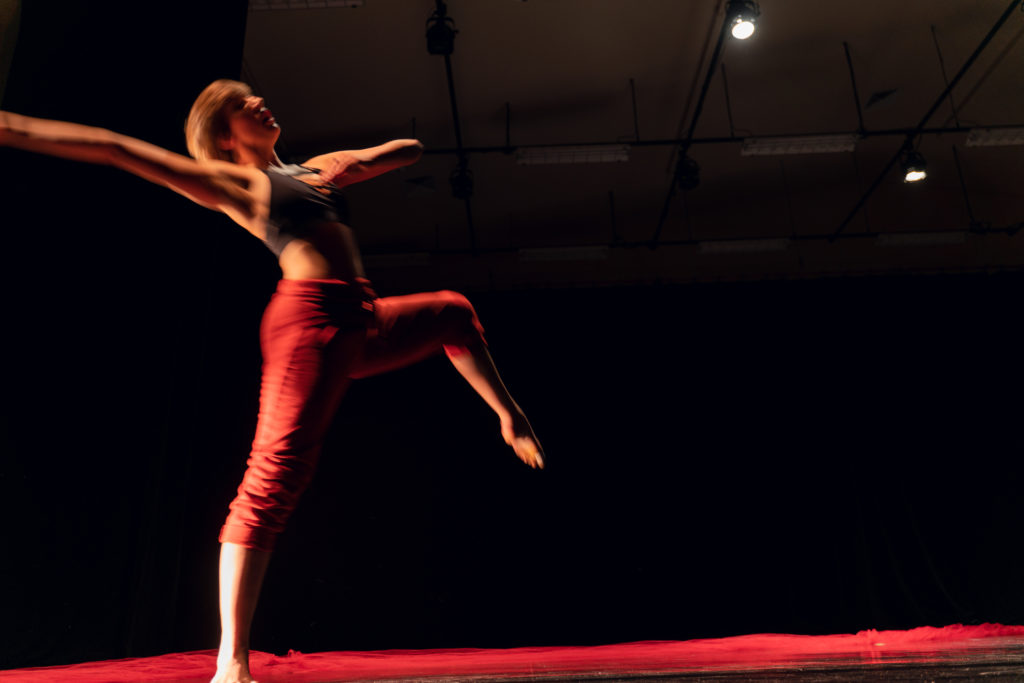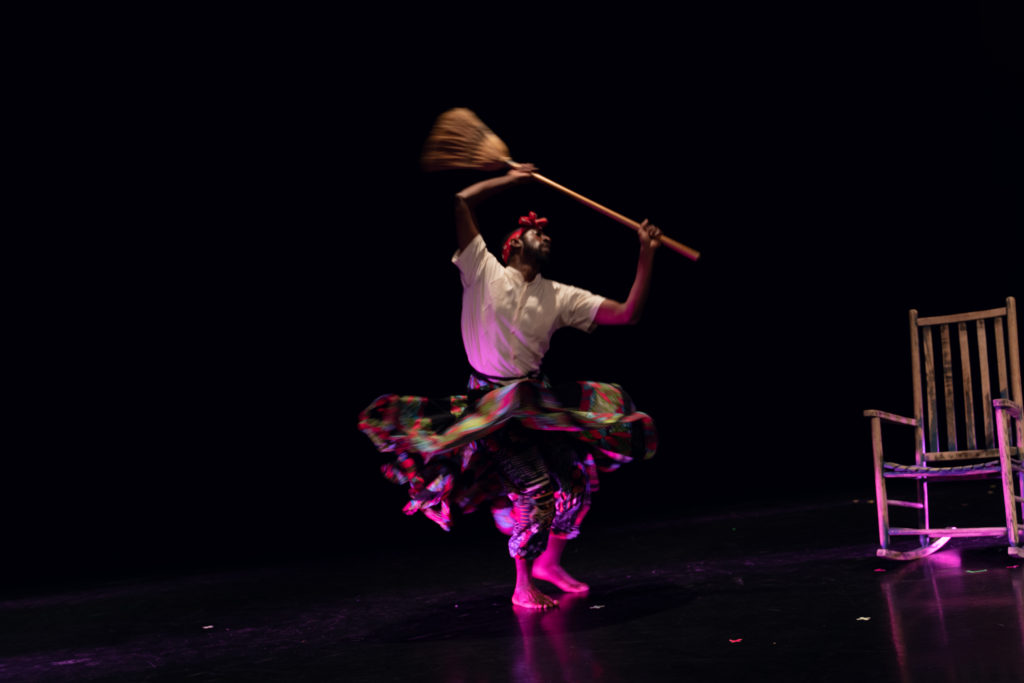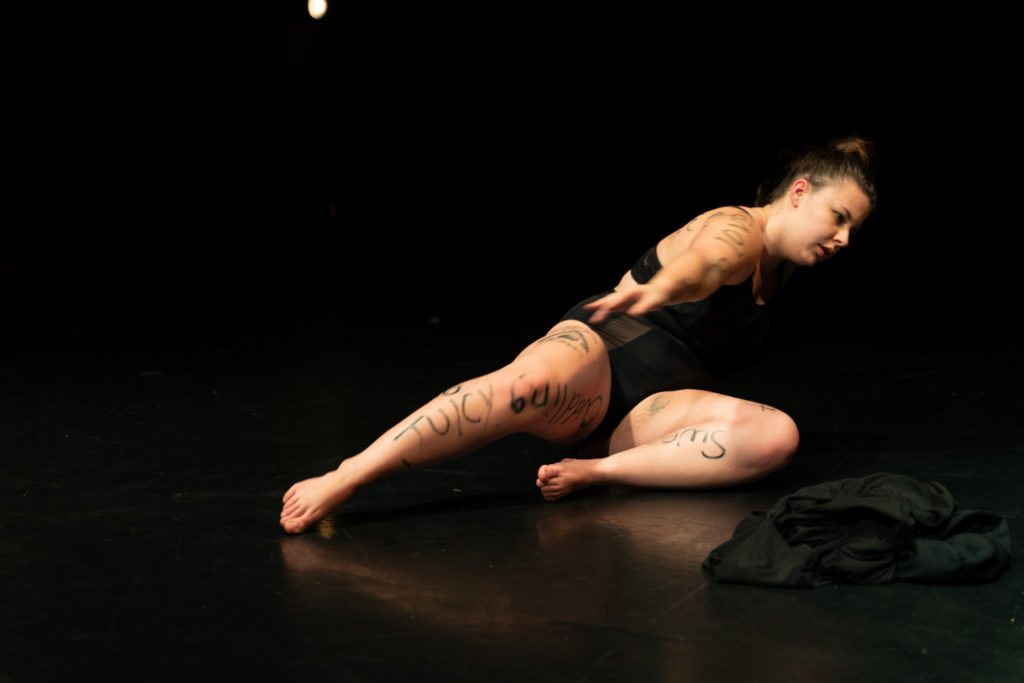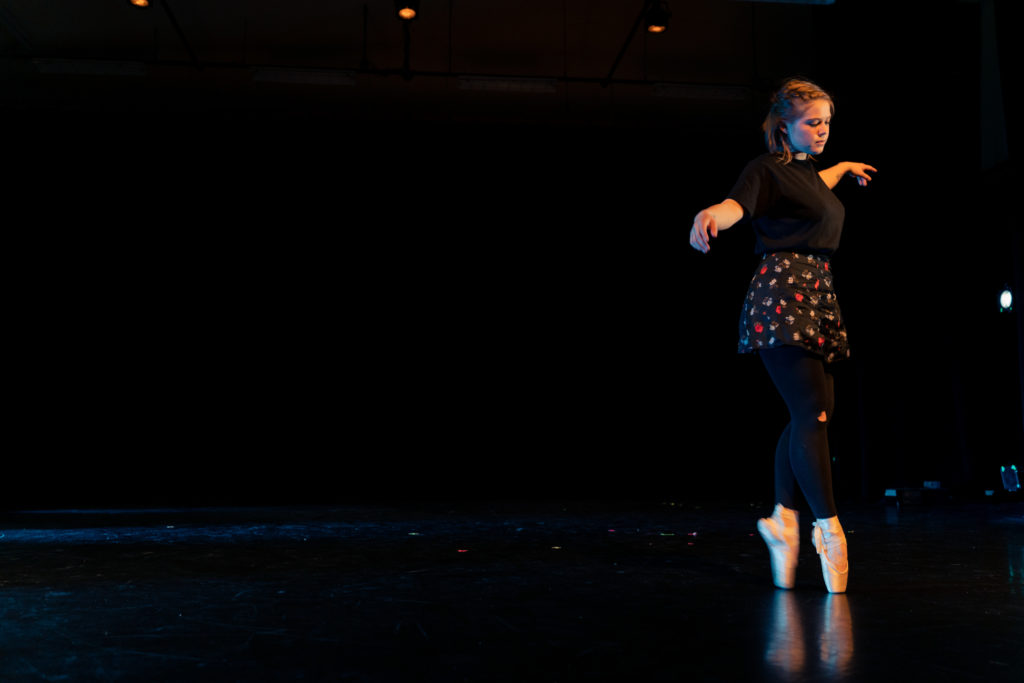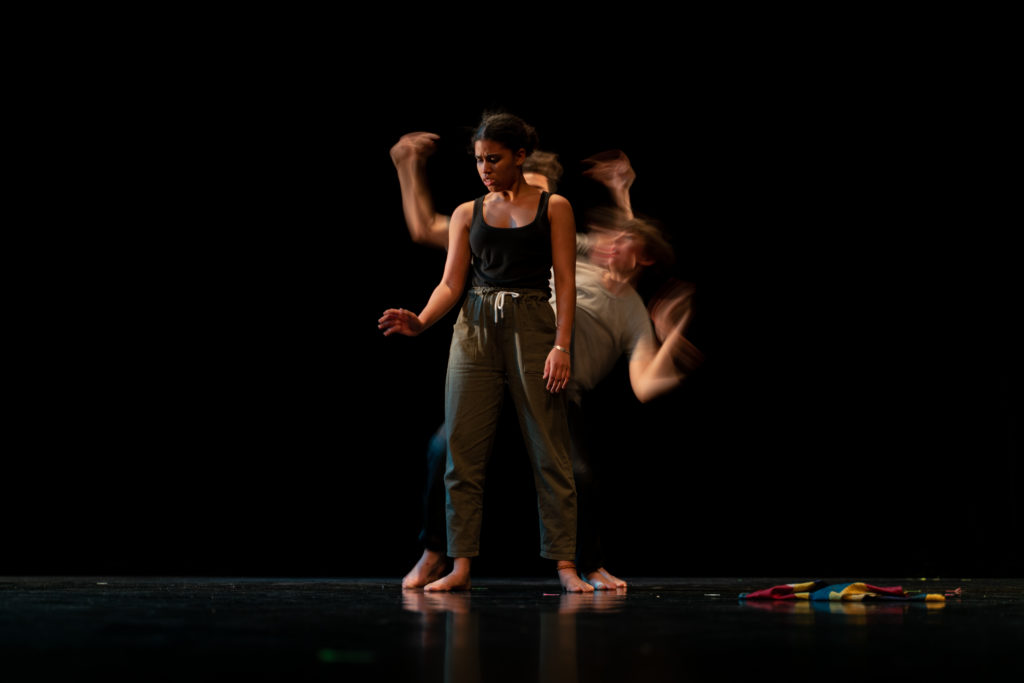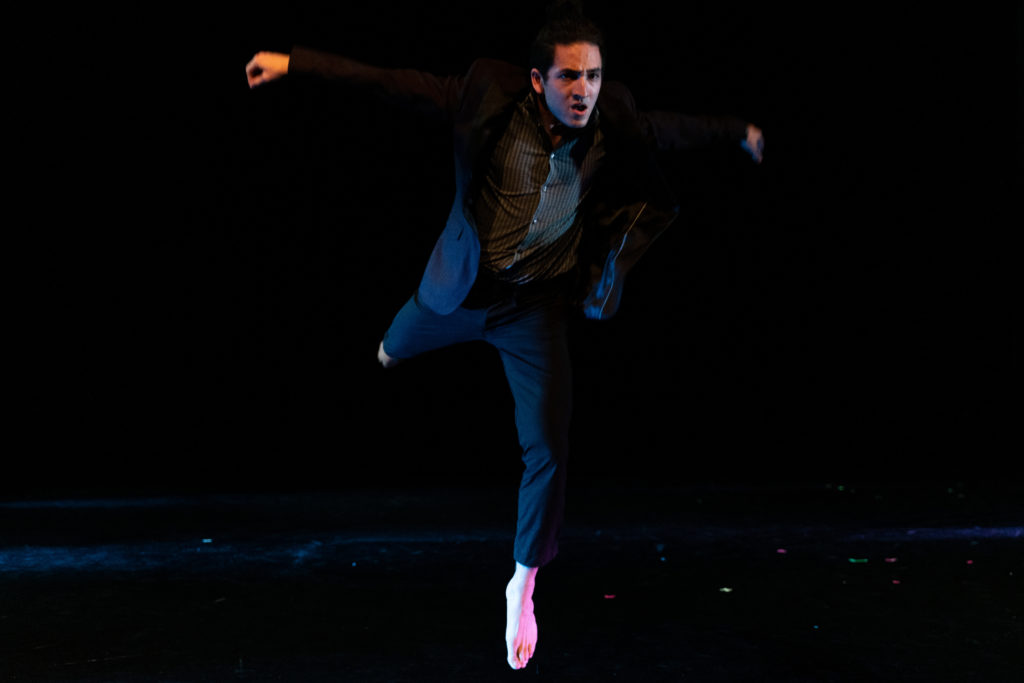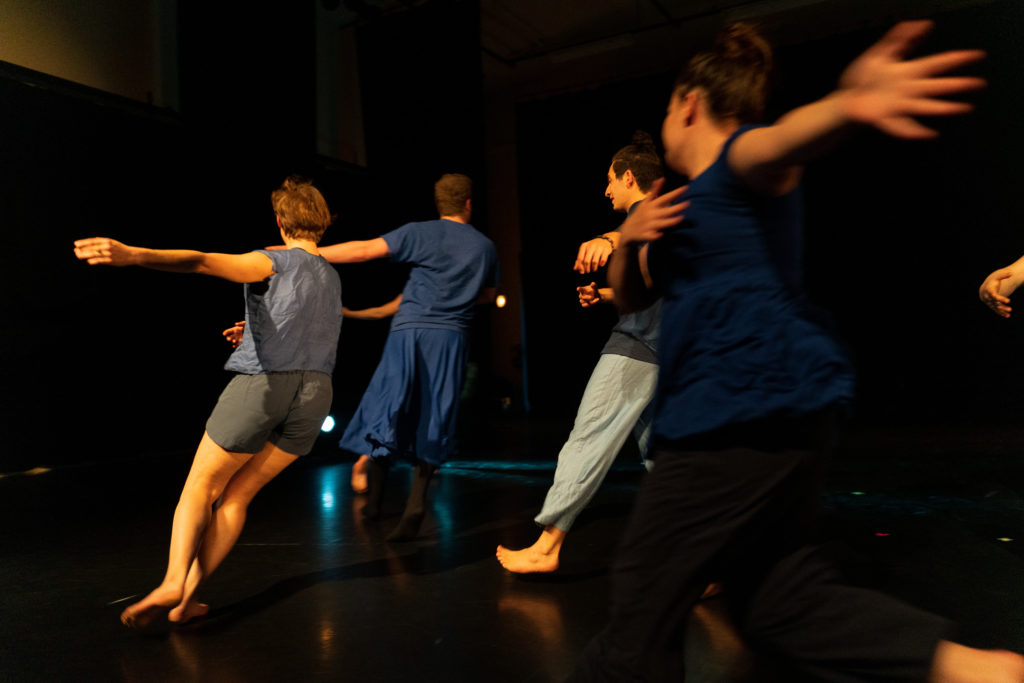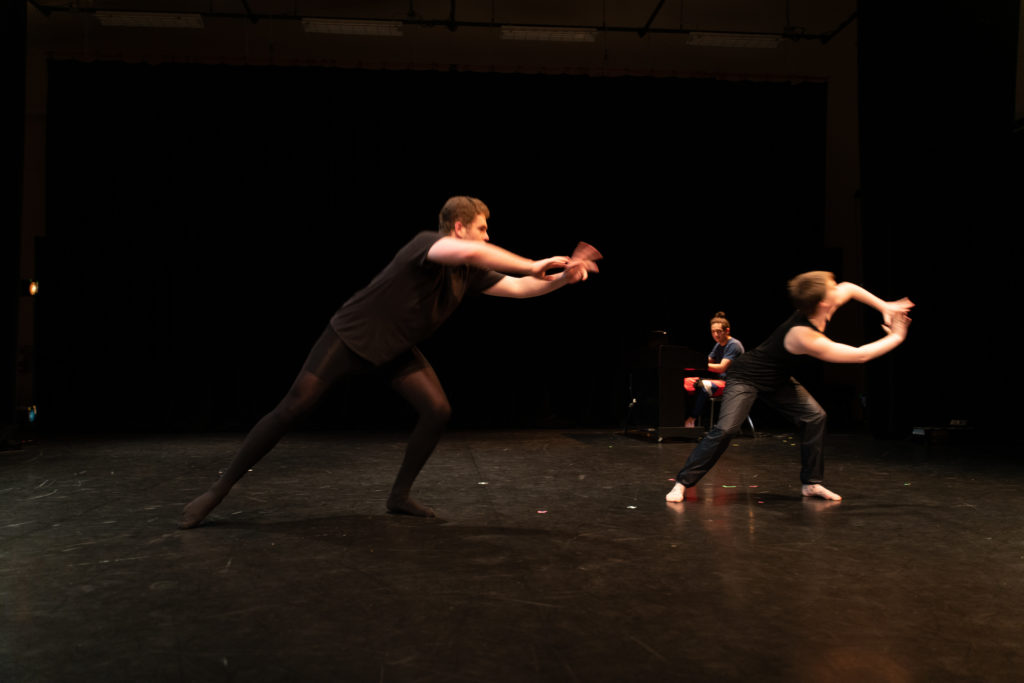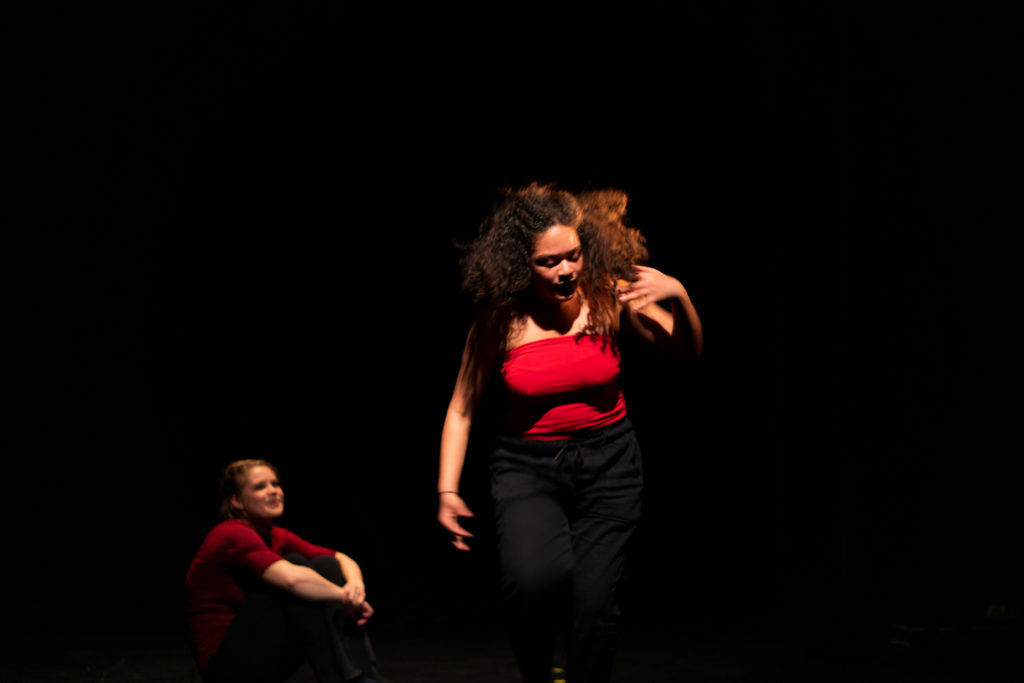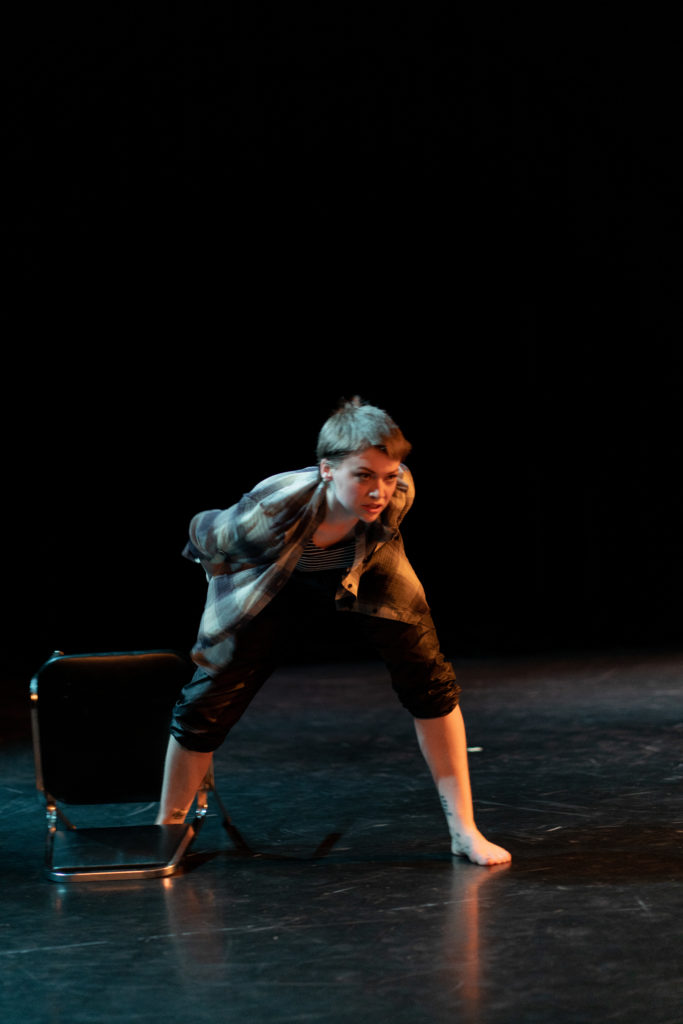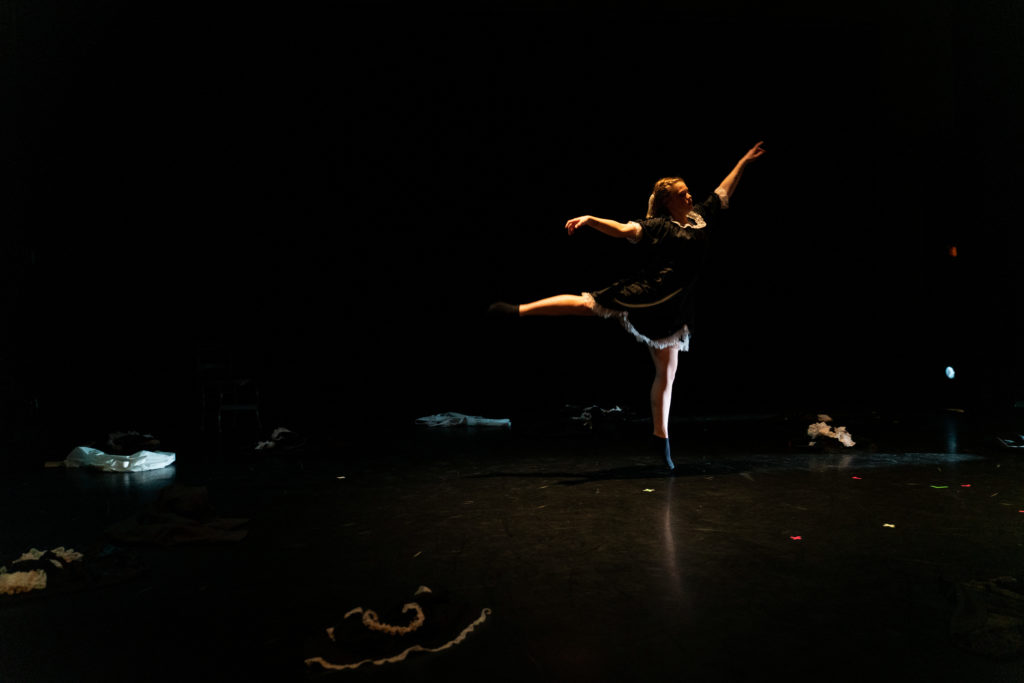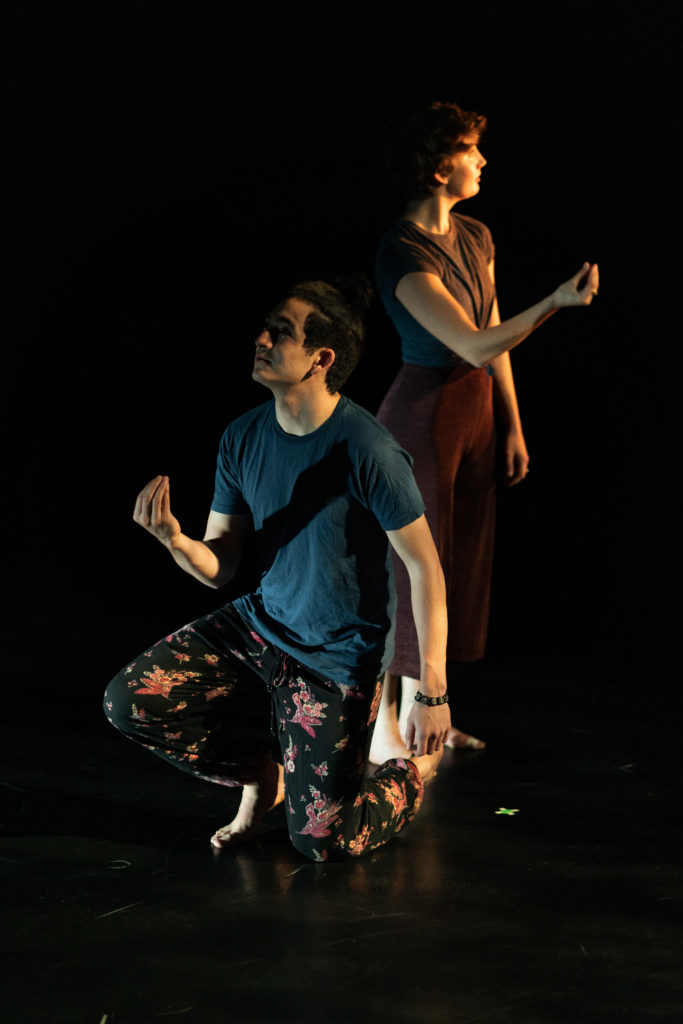I am deeply committed to making space for embodied learning in academia. Learning to listen to our bodies and discovering how our bodies learn are central skills for making art and for navigating the world. Through dance, students can develop tools for creative and analytical thought, from an embodied perspective, that they can carry out into their lives. For these reasons, I believe in making dance accessible to students at all levels of experience and ability.
I strive to teach dance in a multidimensional way, sharing its many forms, its histories, its theories, its methods, its relationships to other aspects of culture and helping my students to develop critical frameworks for understanding dance in a larger social context. We cannot turn a blind eye to the politics of race, gender, class, etc. that have shaped the dances we love and that emerge in the work we create.
By focusing on making art they care about, students gain the hunger to learn the tools and techniques that will help them bring their visions to life. Learning to give thoughtful, specific, artist-centered feedback helps students build community with one another and the language to articulate their ideas about dance. Self-reflection plays a big role in my teaching as well, helping students define their own goals, take ownership of their process of learning, and gain clarity about the effectiveness of their work.
I believe in working together deeply with each student, identifying their strengths, passions and dreams, and helping them to build the skills, experience level, and confidence to be successful. I am blessed to be teaching at Marlboro College where small class sizes and individualized degree programs allow me to dive in deep with each person.
(In 2020, Marlboro College merged with Emerson College – Stay tuned for a new page on Emerson College coming soon!)
Studio Courses
Choreography
In this class, students will explore both the art and the craft of making dances. Responding to specific assignments, students will create a number of dances throughout the semester, bringing a new draft to class each week. Class sessions will focus on viewing and discussing students’ work, and on exploring tools for the creative process and ideas about composition. Attention will be given to learning how to give and receive choreographic feedback, and to editing and developing existing choreography. In addition, students will study the choreographic methods of other artists through viewing videos and reading texts. This course will require students to work independently and commit a substantial amount of time outside of class to the completion of choreographic studies. Students will present their final projects in an end of the semester showing. This course may be repeated for credit; assignments, readings, and special topics will differ each semester.
Beginning Modern Dance Technique
How can your body move efficiently and powerfully through space? What pathways of movement work with the skeletal structure of the body to create an easeful flow? How does becoming more aware of bodily sensations change your ability to control your own movement? In this beginning modern dance course, we will spend our time learning by moving. You will develop a basic vocabulary of movement principles that are used in contemporary dance performance and work on the ability to learn physically — improving physical coordination, strength, flexibility, balance, and body awareness. Supporting our study of movement techniques will be some personal movement exploration (through improvisation and choreography) and occasional readings or video viewings to contextualize our dancing.
Intermediate/Advanced Contemporary Dance Technique and Partnering
This course will offer intermediate and experienced dancers the opportunity to explore the intersection of contemporary modern dance technique and contemporary partnering. Solo work will be based in contemporary release-based technique and partnering work will stem from principles of contact improvisation. Students will learn how to use weight, momentum, breath, muscle tone, and a clear understanding of the structure of the body to move dynamically through space, in and out of the floor, up into the air, and on and off balance. Through our practice, we will develop strength, range of motion, balance, flexibility, stamina, self-awareness, and coordination. If participants are interested, we will create a short performance piece in this class, to be shared with the community at the end of the semester.
Making Art with Your Body: Contemporary Dance and Dance-Making for All Bodies
This course offers the opportunity to build movement skills, dance as a community, and co-create dances with other students. We will focus on developing expansive, articulate and powerful dancing through a study of the principles of contemporary modern technique. Core concepts will include dynamic alignment, weight transfer, momentum, breath, movement initiation, and muscular efficiency. Through our practice, we will develop strength, range of motion, balance, flexibility, stamina, self-awareness and coordination. We will also regularly enter into the realm of creating choreography, working in groups in class (and occasionally outside of class), exploring simple frameworks that offer a taste of what it’s like to create art with movement. Experienced choreography students taking this course may serve in leadership roles, leading movement exercises and creating choreography for the other students in class. Some readings and video viewings will be used to help students contextualize their studio practice.
Contact Improvisation
Contact Improvisation (CI) is an exploration of the movement that is possible when two bodies are in physical contact, using each other’s support to balance and communicating through weight and momentum. CI was invented in the United States in the early 1970s and it has since spread all around the world, where it is practiced both as a social dance and as a component of post-modern dance performance. In this class, we will learn basic skills and concepts to enter the practice of contact improvisation. We will work to develop comfort with our bodies, to trust one another, to take risks, to make choices in the moment, and to understand the forces of physics as they apply to the body in motion. We will listen to sensation, communicate through skin and muscles, develop reflexes for falling and flying and find access to our own strength and sensitivity.
Anatomy of Movement (co-taught with biologist Jaime Tanner)
An introduction to human anatomy with emphasis on the musculoskeletal system and biomechanical principles of movement. Concepts will be explored through a combination of scientific study, experiential anatomy, and dance movement
Mass, Movement, Making
This course brings together weight training, anatomy and choreography to help you strengthen and understand your body…while participating in the creation of a work of art. We will work with kettle bells and hand-weights to learn a simple sequence of strengthening movements. This movement will form the foundation of a performance piece created by the instructor, Kristin Horrigan, in collaboration with the students. Along the way, we will study musculoskeletal anatomy and meet periodically with a weight trainer to inform our physical practice and look at occasional readings or videos about the work of other artists who create dance with “found” movement to inform our art-making. Students will be expected to attend a 1-hour practicum outside of class at least once per week to build their strength. The choreography we create will be presented in the fall dance concert, Dances in the Rough, in December. Students, faculty and staff are all welcome to participate.
History/Theory Courses
Dance and Gender
This course will examine the many ways in which gender is represented, constructed, and questioned through the dancing body. American stage performance and the training of stage performers will be our primary locus of study. However, the course will also engage in some investigation of social dancing, exotic dance, and dances of other cultures. Drawing from gender theory, feminist theory, queer theory, we will build a conceptual framework to help us analyze the embedded gender narratives in the dances we see and do.
Dance as Social Action
This course examines the intersection of dance and social/political activism, focusing primarily on American modern dance performance, but taking detours into the dances of other times, places, and cultures. How can dance participate in addressing social issues? How has it done so in the past? Can dance actually spark social change? We will examine dances that bring social and political themes to the concert stage, dances that protest in the street, dance companies that challenge the politics of who gets to dance, and more. Class work will be based in discussion of readings and dance films, but the course will also include guest speakers, creative work, fieldtrips/service learning, and a research paper.
Dance in World Cultures
In this course, we will explore what dance means in a variety of cultures around the world and address the complexities inherent in studying dance forms from outside our own cultural traditions. Class work will be based in discussion of readings and dance films, but the course will also include a number of studio master classes with guest artists.
Roots of the Rhythm
In this course, we will trace the development of uniquely American dance forms such as tap dancing, jazz dancing, Appalachian clogging, and hip-hop from their origins in the rhythmic dances of Africa and Western Europe through their development on American stages and in social dance contexts. Our focus will include both the aesthetic principles active in these dances and the complex dynamics of race, class, gender, and culture that shaped their development.
Here are some of my amazing students from the Marlboro College Dance Program sharing their recent work:
Photos by Kelly Fletcher and David Teter

